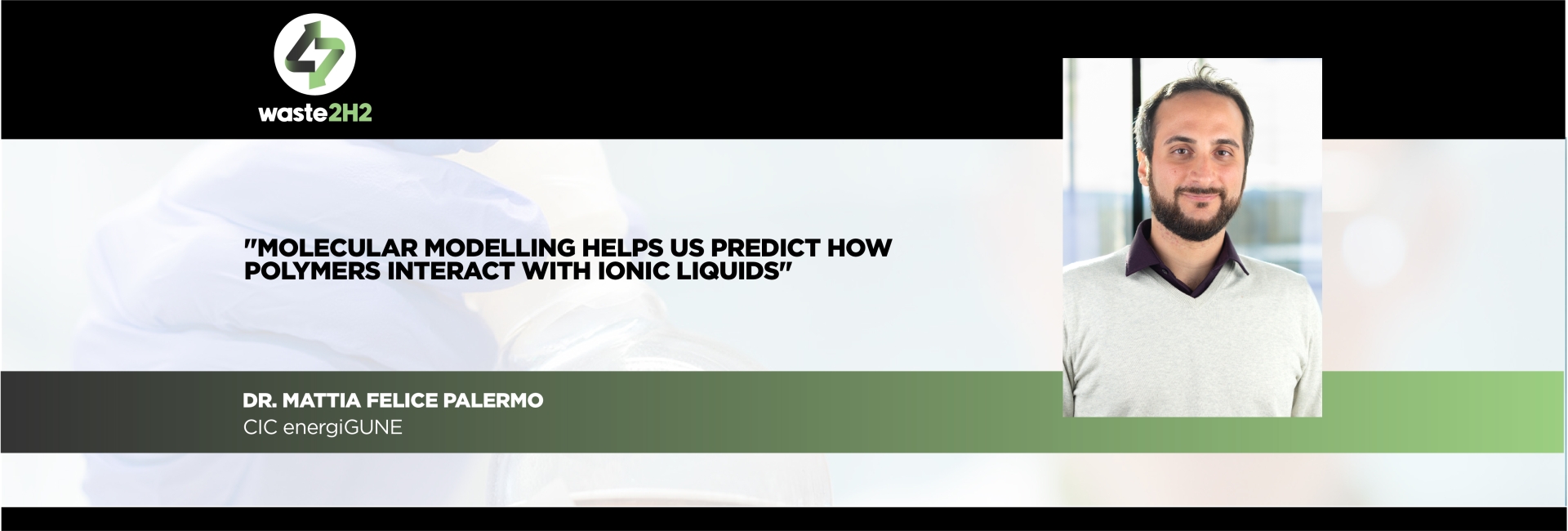
"Molecular modelling helps us predict how polymers interact with ionic liquids"
Computational analysis plays a crucial role in the WASTE2H2 project by efficiently screening ionic liquids for their ability to dissolve polymers. This significantly reduces the need for extensive experimental trials, making the process more efficient and cost-effective. Mattia Felice Palermo, a researcher at CIC energiGUNE, explains how computational tools help optimize the project’s objectives.
How can computational analysis contribute to the goals of the WASTE2H2 project?
Computational analysis, using molecular modelling, significantly contributes to the WASTE2H2 project because it provides a way to efficiently screen ionic liquids for their ability to dissolve polymers, reducing the need for extensive experimental trials. By simulating the behaviour of polymers in these liquids, we can determine if the polymer remains well-dissolved or forms clumps. Good dissolution is crucial for efficient polymer breakdown, as it ensures the catalyst can effectively interact with the polymer, enhancing catalytic activity.
Which computational tools will be employed in the WASTE2H2 project, and why were they selected?
We will use Molecular Dynamics (MD) simulations to study how polymers and ionic liquids interact. MD is perfect for this because it allows us to see the dynamic interactions of molecules at the molecular level. We also use analysis techniques to measure the size and shape of polymer aggregates, helping us compare how well different ionic liquids work to dissolve polymers.
What are the key challenges or limitations computational analysis might face within this project?
A key challenge is the size of our simulations. We can only model small polymer systems due to computational constraints. These smaller systems give us valuable insights, but we must interpret our results carefully, knowing they represent a simplified view of real-world polymer waste. Another challenge is the computational demand, especially when we need to test many different ionic liquids to find the most effective ones.
Despite these challenges, computational modelling remains a powerful tool in advancing the WASTE2H2 project’s goals. By leveraging molecular modelling, researchers can streamline the experimental process, significantly reducing the time and resources needed to identify optimal conditions for sustainable hydrogen production.